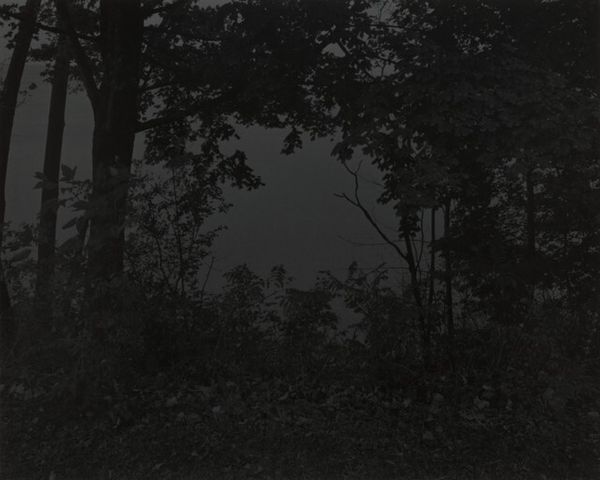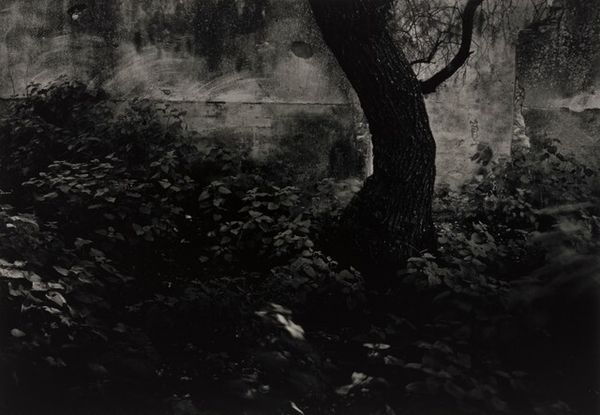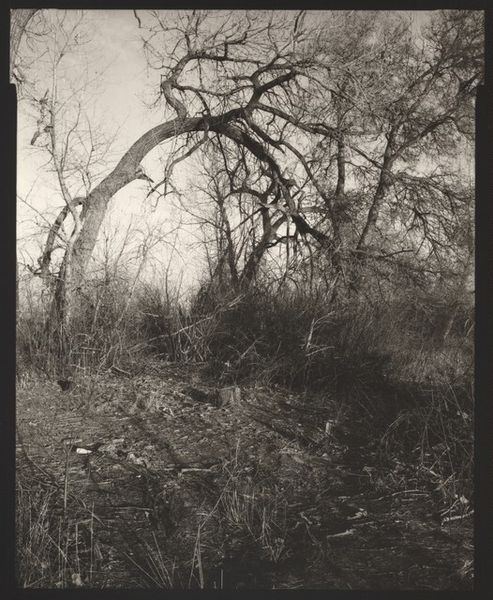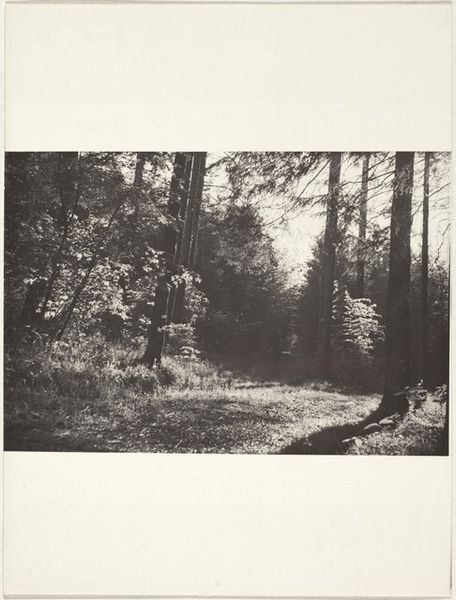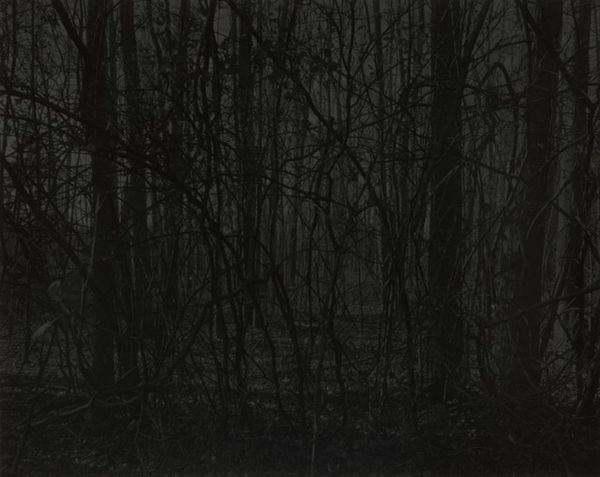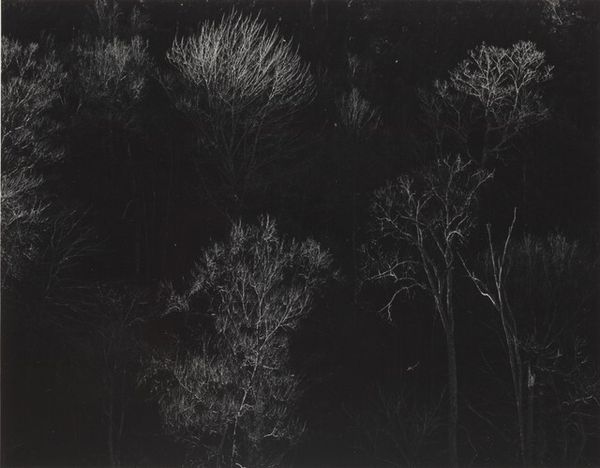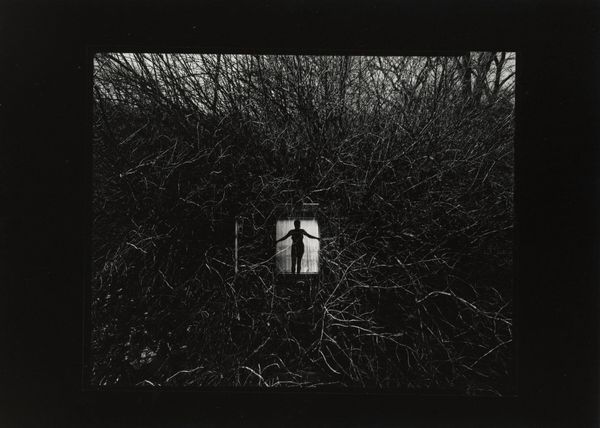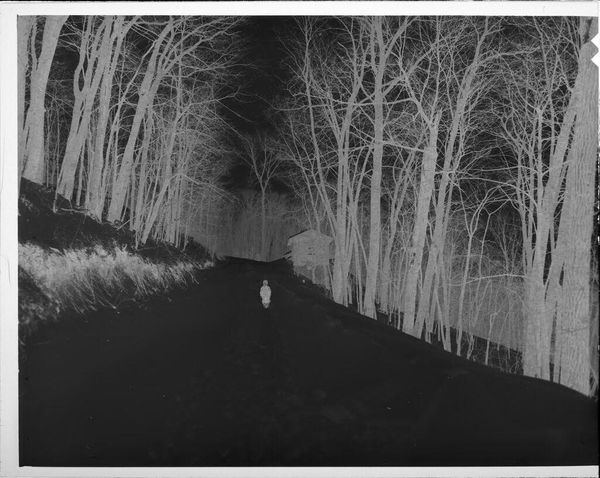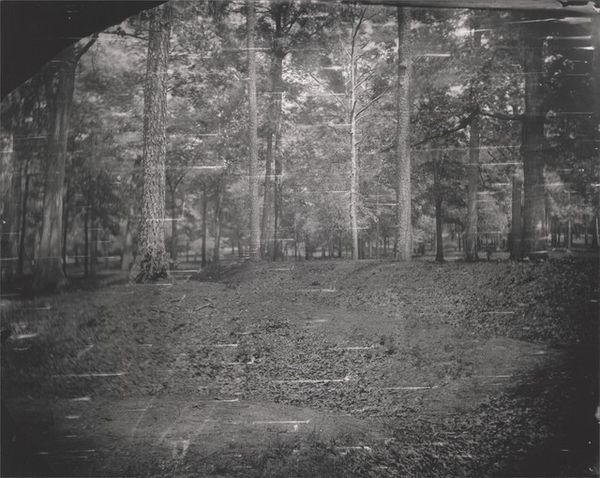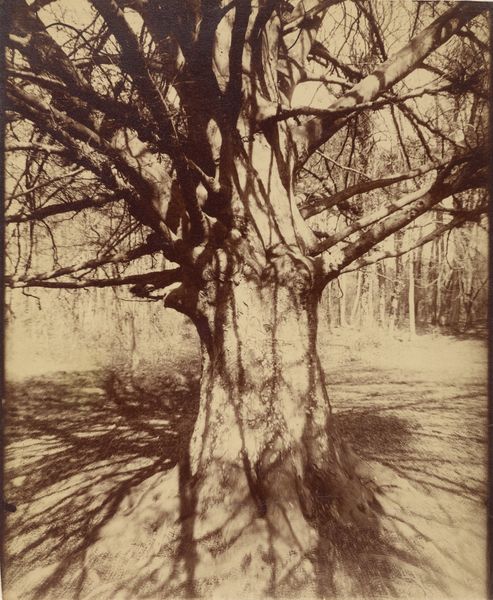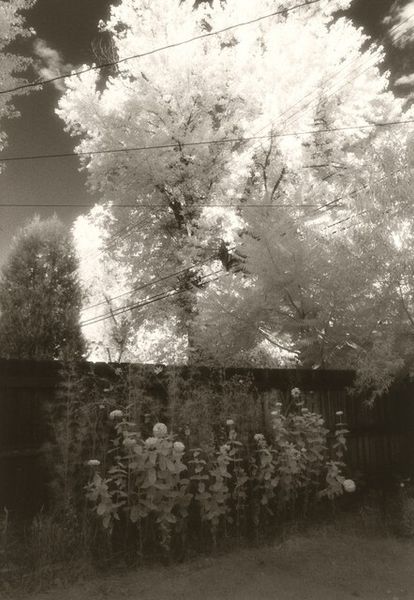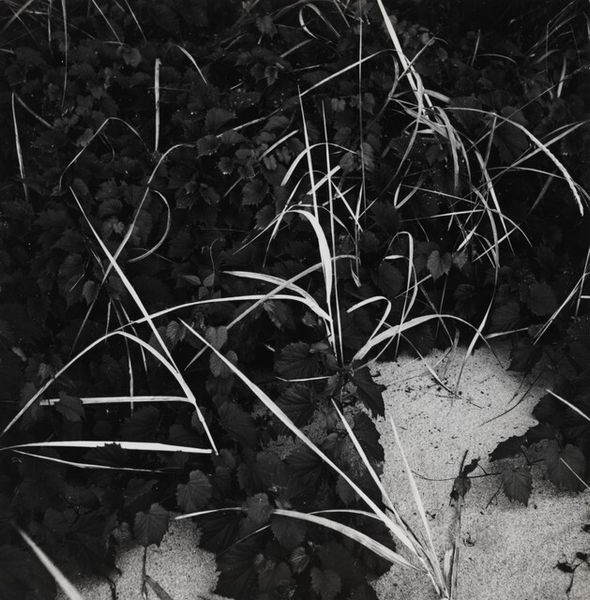
photography, gelatin-silver-print
#
contemporary
#
black and white photography
#
landscape
#
black and white format
#
photography
#
gelatin-silver-print
#
monochrome photography
#
monochrome
#
modernism
#
monochrome
Dimensions: image: 96.84 × 122.56 cm (38 1/8 × 48 1/4 in.) framed: 100.01 × 126.21 cm (39 3/8 × 49 11/16 in.)
Copyright: National Gallery of Art: CC0 1.0
Editor: This is Sally Mann’s "Battlefields, Antietam (Trenches)," a gelatin-silver print from 2001. It’s…haunting, almost abstract at first glance. There's this incredible contrast, and it makes the landscape seem both intimate and distant. What strikes you most about this photograph? Curator: The power lies, I think, in Mann’s confrontation with the complex relationship between history, place, and representation. Antietam, a site of immense suffering and loss, is reduced to this stark landscape, seemingly devoid of explicit signs of conflict yet laden with its spectral presence. Editor: So, the image acts as a kind of memorial, then? Curator: Exactly. Mann isn't offering a literal depiction of the battlefield; instead, she explores how memory and history are embedded within the landscape itself. Think about how the image's visual rhetoric - the monochrome palette, the blurry focus - echoes 19th-century photography, the same technology used to document the Civil War originally. Editor: That makes sense. So it's about the *act* of witnessing, as much as what’s being witnessed? The layers of time and perspective. Curator: Precisely! Consider too, how the photo challenges traditional heroic narratives. By focusing on the quiet, almost unassuming trenches, Mann reframes our understanding of war and its impact, doesn’t she? How might a modern audience perceive a picture like this, stripped of clear narrative? Editor: I guess, in a world saturated with conflict imagery, the quietness almost amplifies the sense of unease. It forces you to really consider what *isn't* being shown. Curator: And that absence is crucial. It demands a different kind of engagement with history, one that prioritizes reflection over spectacle. The political role of this type of imagery is a thoughtful step away from more documentary modes of capturing similar historic landmarks. Editor: That's a really powerful way of seeing it. Thanks! Curator: My pleasure. I hadn’t quite thought of it that way before.
Comments
No comments
Be the first to comment and join the conversation on the ultimate creative platform.
